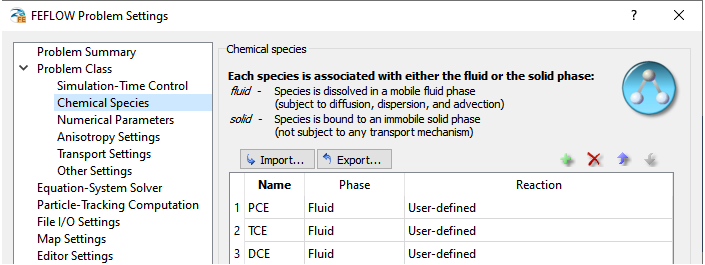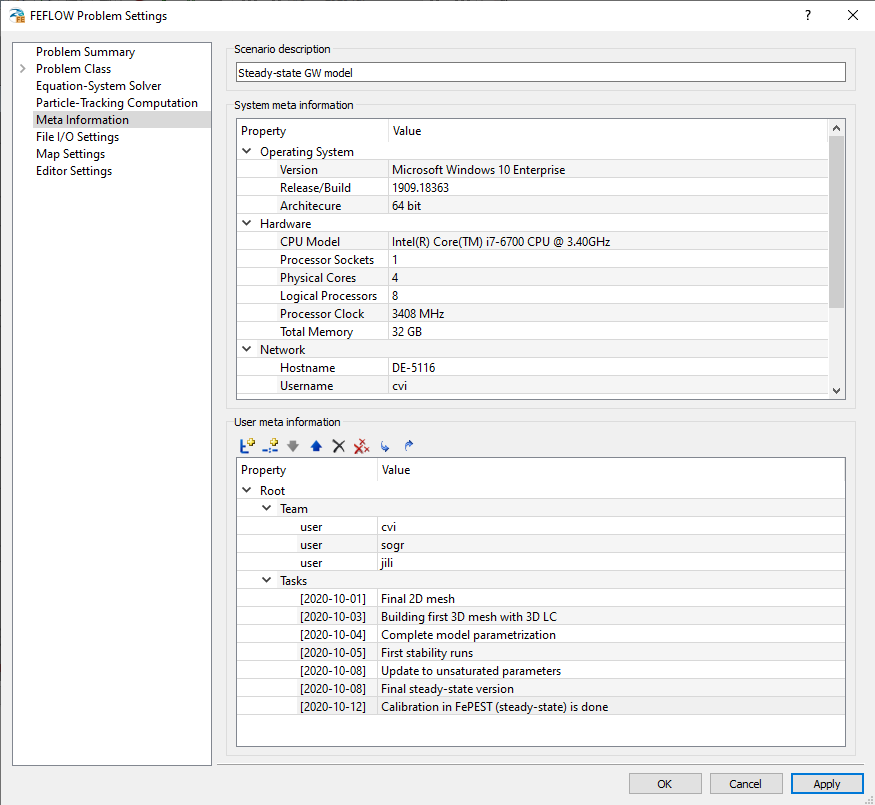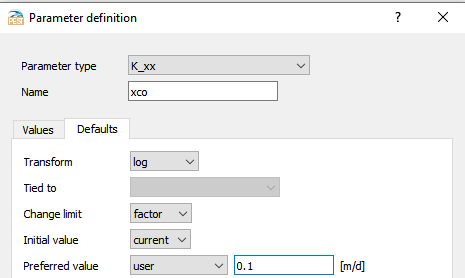What's new in FEFLOW 7.4?
In this FEFLOW release we have new exciting software features to support your current modelling applications and more:
-
FEFLOW comes with an extended Python interface support to speed-up even more your modelling workflows. Together we are also providing a robust new FEFLOW Python APIs documentation. IFM methods are also available through the C++ interface.
-
FEFLOW presents now a flexible framework for multi-species transport. Chemical transport species and their kinetic reactions can be exported / imported. This minimizes the effort to set-up transport models with a large number of chemical species.
-
Every FEFLOW installation now brings the FEFLOW piHMC plug-in. This plug-in incorporates a fully hydro-mechanical coupling in the flow simulation in FEFLOW.
-
If you are looking to transfer the existing modelling knowledge from other software platforms, FEFLOW now brings a separate tool to convert MODFLOW 6 files into a FEFLOW mesh. The conversion tool has the possibility to import as well the already-defined material properties.
-
We have upgraded to a new OpenGL version. This maintains FEFLOW graphical components as the cutting-edge technology in the groundwater market.
-
FEFLOW comes with a new Meta Information block. Tool supports the collaborations between groundwater modellers and helps to document the entire modelling workflow.
-
Last but not least, FePEST comes reloaded with a new set of interesting features.
A detailed description of the major software features is presented below:
Expanding FEFLOW Programming Interface (Python / C++)
We have reviewed the entire FEFLOW Python documentation to offer a clear framework. The first milestone is available in our new FEFLOW Python Documentation.
This new version of FEFLOW comes with many new FEFLOW API functions, which are available both in IFM C++ and Python. Below you get the entire overview of all new implementations:
| FEFLOW IFM Functions |
|---|
|
Conductivity anisotropy:
|
|
Chemical reactions:
|
|
Handling selections:
|
|
New parameter access by ID and sub ID
|
|
Parameter expressions:
|
|
Budget and content diagrams:
|
|
Coordinate system:
|
|
Simulation times
|
Through the generalized method doc.getParameter(), we offer a comfortable methodology to access new parameters such as:
-
Auxiliary parameters
-
Modulation functions
Extending Usability for Multi-species transport.
The full description of the Chemical species and their chemical "connections" could be very tedious to prepare and complex. In some application cases, chemistry can be the same, but model geometry different. Now the user has the possibility to export / import the complete information behind the Chemical Species section of the Problem Settings dialog. This options does not only import the number of species, but also the chemical reactions associated to them.

Hydromechanical Support now with FEFLOW piHMC
FEFLOW Hydromechanical coupling plug-in provides a huge milestone in the way how groundwater modelling is done nowadays.
This plug-in describes the application of a modified Hooke's law to evaluate the hydro-dispersive parameters hydraulic conductivity, porosity, and storage coefficient, as a function of effective stress.
Model functions relating effective stress - hydraulic conductivity, porosity and storage coefficient have been developed from Hooke’s law of elasticity and implemented in the FEFLOW software. They look at porous (granular) medias and fractured media in a specific manner using appropriate conceptualizations of model hydro-parameters.
Based on predefined elemental selections in FEFLOW, the user can define different effective-stress models for fractured and granular media. Given the choice of model and parameterization, elements contained by these selections will be assigned the stress-dependent hydro-dispersive parameters. Portions of the mesh with no such associations are operating as usual, so the user needs to make sure the proper parametrization in FEFLOW exists for such mesh elements.
The plug-in supports the assignment of a stress-dependent fracture model for selected Discrete Feature Elements.
MODFLOW Extractor
The MODFLOW Extractor has been developed to convert grids/meshes developed in MODFLOW 6 to FEFLOW’s FEM format, facilitating the migration from MODFLOW 6 to FEFLOW. Aquifer parameters stored in MODFLOW 6’s Layer Property Flow (LPF) and Storage (STO) packages can be also converted and saved in the FEFLOW FEM file as reference distributions. In addition, the extraction tool stores the original MODFLOW 6 cell indexes in the FEFLOW file, which can be used for manual importing of boundary conditions and other MODFLOW 6 inputs and outputs.
Meta Information Block
The documentation of the modelling tasks is a crucial information in project management. This new version of FEFLOW offers a full Meta Information system. Users can create their own information blocks to allowing a clear documentation of the different modelling tasks in FEFLOW.
Meta information is saved in the FEFLOW files and can be imported/exported as XML file format. Methods are implemented in the flexible manner to support adding new information via the FEFLOW console or FEFLOW Python integration.

New features in FePEST
-
FePEST now has extended the concept of Preferred Value used for the Tikhonov Regularization. A Preferred Value is used to provide additional guide to the constrained calibration in FePEST. Until the latest FEFLOW version, the value was always set to the initial parameter value. Now the user can provide a preferred value, which departures from the initial value used for the optimization.

-
This version of FePEST comes alone with an optimized graphical interface to operate a large number of observations and parameters. Operations of adding, updating or removing parameters have been intensively reviewed.
-
FePEST project file (*.fps) has been reviewed and now provides a much condenser XML format. Such as update will support experienced users, who are familiar to modify the file via scripting operations.
-
FePEST brings now a complete Python support. Enable scripting in FePEST can be activated to run user-defined scripts stored in the FEFLOW files.









